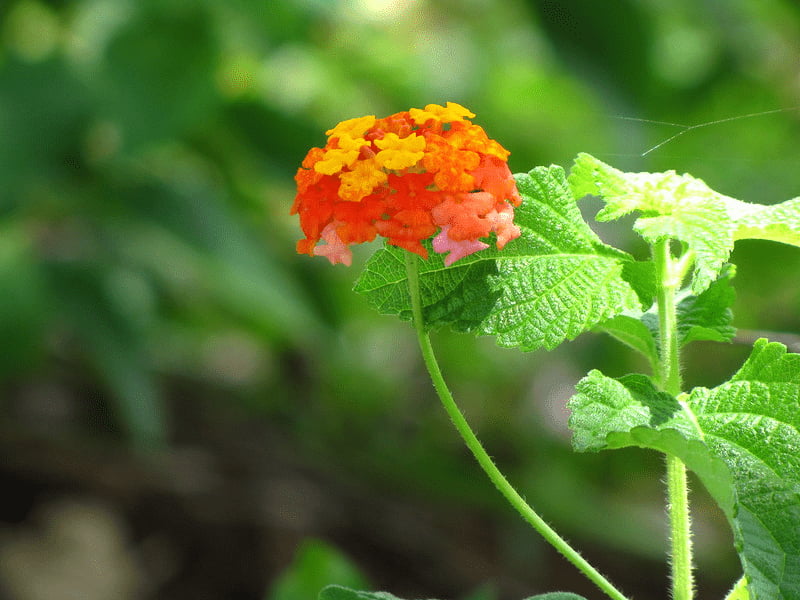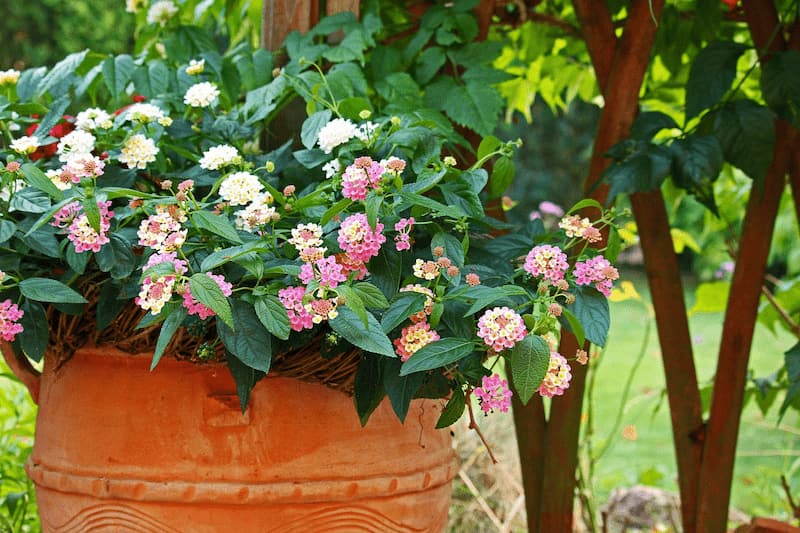How can one not appreciate the lantana with its spectacular display of colourful umbels that evolve as they bloom from red to pink, passing through white, yellow, and orange? An evergreen shrub in mild climates, the lantana offers its multicoloured palette almost all year round. Because it is sensitive to frost, it is grown as an annual plant elsewhere. Another advantage of the lantana lies in its evergreen, aromatic foliage that releases fragrance when crushed between fingers. Undemanding when it comes to soil and highly drought-resistant, the lantana has only one requirement: a spot in full sun.
If you wish to propagate this shrub to create a beautiful flower bed or share with neighbours, the best method is by taking cuttings. Follow our advice to successfully propagate your lantana.
Essential Equipment for Propagating Lantana
- A pair of secateurs with sharp, sterilised blades;
- A rooting hormone, willow water, or cutting powder (optional);
- A seed tray, conventional seedling pots, biodegradable pots, or terracotta pots;
- Cutting or seed compost;
- Sand;
- A spray bottle;
- A cloche, mini greenhouse, cut plastic bottle, or a simple plastic bag;
- A pen.
When to Take Lantana Cuttings?
There are two ideal periods for propagating lantana: early spring or late summer. If you take cuttings around March, when growth resumes, the lantana will have fresh, tender green stems.

To propagate lantana, select a young, non-flowering stem
Alternatively, you can take cuttings at the end of August. By this time, the stems will be semi-hardwood—firmer and more woody.
Steps for Propagating Lantana
- Prepare the substrate in your chosen container by mixing two-thirds cutting or seed compost with one-third sand.
- Lightly moisten the substrate with a spray bottle.
- Using sharp secateurs, take 8–15 cm cuttings from healthy green shoots or semi-hardwood stems, ensuring they are free of flowers.
- Remove the lower leaves, leaving only two at the top, which you may halve to reduce moisture loss.
- Dip the stems in rooting hormone, willow water, or cutting powder (optional). Shake off excess.
- Use a pen to make 5 cm-deep holes, spaced 10–15 cm apart.
- Insert the cuttings and gently firm the soil around them.
- Water lightly at the base using a spray bottle.
To encourage optimal growth, cuttings should be placed in a humid environment. Cover them with a plastic bag, cloche, or upturned bottle to maintain warmth and moisture. Ventilate occasionally to prevent condensation and rot.
Aftercare
Place the container in bright, indirect light at around 20°C. Water regularly but sparingly—keep the substrate moist but not waterlogged.
After two to three weeks, new leaves should appear. You can then remove the plastic covering.
After two or three months, the cuttings will have rooted. Transplant them into potting compost and continue monitoring moisture levels. In winter, store potted cuttings in a bright, cool (10–12°C) location, reducing watering frequency.
Come spring, you can plant your lantanas outdoors if the climate permits. Use a frost cloth if nighttime temperatures drop.
In cooler regions, grow lantanas in pots to adorn gardens, balconies, or patios. Bring them indoors to a bright, unheated room (such as a conservatory) when autumn night temperatures approach 2°C.

In cooler climates, lantanas are grown in pots or as annuals



































Comments